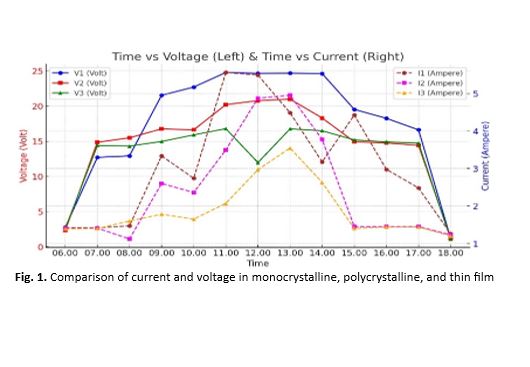Evaluation the Effect of Radiation and Temperature on the Efficiency of Various Types of PV Panels Monocrystalline, Polycrystalline, and Thin Film
DOI:
https://doi.org/10.37934/sej.9.1.3853Keywords:
Photovoltaic efficiency, monocrystalline, polycrystalline, thin-film, temperature effect, irradiance effect, solar energyAbstract
Solar photovoltaic (PV) technology is a key solution for sustainable energy generation. However, its efficiency is significantly affected by environmental factors such as solar radiation and temperature. Understanding these impacts is crucial for optimizing PV performance under varying climatic conditions. The efficiency of PV panels varies based on material composition and environmental exposure. While single-crystal panels offer high efficiency, they are more sensitive to temperature fluctuations. Polycrystalline panels, though cost-effective, have lower efficiency, and thin-film panels exhibit better performance in low-light conditions but with lower maximum efficiency. This study aims to analyze how solar radiation and temperature affect these different PV technologies. This research evaluates the performance of three common PV modules monocrystalline, polycrystalline, and thin film by examining their efficiency under various radiation and temperature conditions. A real-time data logging system was used to monitor solar radiation, voltage, current, and temperature. The collected data were analyzed to determine efficiency variations in different environmental conditions. Monocrystalline panels achieved the highest efficiency, peaking at 27.70% within radiation intensities of 600–800 W/m². However, they are highly sensitive to temperature increases, with a coefficient of 0.35%/°C. Polycrystalline panels exhibited lower efficiency (20.80%) and a slightly higher temperature sensitivity of 0.40%/°C, making them less suitable for high-temperature regions. Thin-film panels had the lowest maximum efficiency (10.26%) but maintained stable performance under different temperature and radiation intensities, with a lower temperature coefficient of 0.25%/°C. Solar radiation directly impacts efficiency by determining the photon energy available for power generation. Efficiency peaks at moderate radiation levels (600–800 W/m²), while excessive radiation (>900 W/m²) leads to thermal losses. The study concludes that monocrystalline panels perform best in regions with stable sunlight and moderate temperatures, whereas thin-film panels are more suitable for low-light conditions. Further studies should focus on enhancing PV performance through advanced cooling mechanisms, hybrid material innovations, and improved Maximum Power Point Tracking (MPPT) algorithms to mitigate efficiency losses due to temperature variations and excessive radiation exposure.










